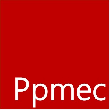Banca de DEFESA: CARLOS EDUARDO VIEIRA MASALLA
Uma banca de DEFESA de MESTRADO foi cadastrada pelo programa.STUDENT : CARLOS EDUARDO VIEIRA MASALLA
DATE: 17/02/2025
TIME: 09:00
LOCAL: UFSJ - CSA
TITLE:
IMPACT OF STATIC AND DYNAMIC CONDITIONS ON LOCALIZED AND GENERALIZED CORROSION OF API X65 CARBON STEEL IN CO2 MEDIA
KEY WORDS:
.Carbon Steel, Sweet Corrosion, Iron Carbonate, Localized Corrosion, Flow.
PAGES: 134
BIG AREA: Engenharias
AREA: Engenharia de Materiais e Metalúrgica
SUBÁREA: Metalurgia Física
SPECIALTY: Corrosão
SUMMARY:
The oil and gas industry faces constant problems with internal corrosion in pipelines and the integrity of structures and pipes. In these environments, the presence of carbon dioxide (CO2) acts as a contaminant that intensifies corrosive processes, a phenomenon known as sweet corrosion. This type of corrosion occurs when dissolved CO2 reacts with water to form carbonic acid, which contributes to lowering the pH and increasing the aggressiveness of the environment. A characteristic aspect of this mechanism is the formation of iron carbonate (FeCO3), which can act as a protective barrier, reducing the corrosion rate. However, corrosion in CO2 environments can manifest itself in different ways, mainly as generalized corrosion and localized corrosion. Generalized corrosion occurs uniformly, resulting in the continuous loss of material, while localized corrosion is more severe and unpredictable, concentrating in specific areas and forming pitting. Both mechanisms are affected by flow, as local turbulence can cause rapid variations in wall shear and turbulent kinetic energy, which influences the mass transfer process and, consequently, the precipitation and adhesion of FeCO3 films. This study evaluated the behavior of API X65 carbon steel under static conditions, varying parameters such as temperature, CO2 pressure and acetic acid concentration, by means of autoclave immersion tests. The most aggressive condition (60 °C temperature, 10 bar CO2 pressure, 60000 ppm NaCl and 1000 ppm HAc) was also evaluated in dynamic tests using a rotating cage (RC) at 800 rpm. To assess the effect of flow, artificial defects were machined into the RC specimens. The results indicated that the different experimental conditions caused variations in the morphology and adhesion of the iron carbonate (FeCO3) films, directly affecting the corrosion rate of the carbon steel. In addition, it was observed that in the dynamic condition, the generalized corrosion rate increased sharply and the emergence of the localized corrosion mechanism was observed. In this condition, the detachment of the FeCO3 film and an increase in the size of the artificial defects were identified, possibly due to the combined effect of the more aggressive environment and the flow over the surface of the specimen.
BANKING MEMBERS:
Presidente - 1525125 - ALYSSON HELTON SANTOS BUENO
Interno - 1987545 - GUILLERMO VILALTA ALONSO
Externa ao Programa - 1720111 - ANDREIA MALACARNE
Externo à Instituição - RHUAN COSTA SOUZA - CEFET/MG
Externo à Instituição - JOSE ANTONIO DA CUNHA PONCIANO GOMES - UFRJ




